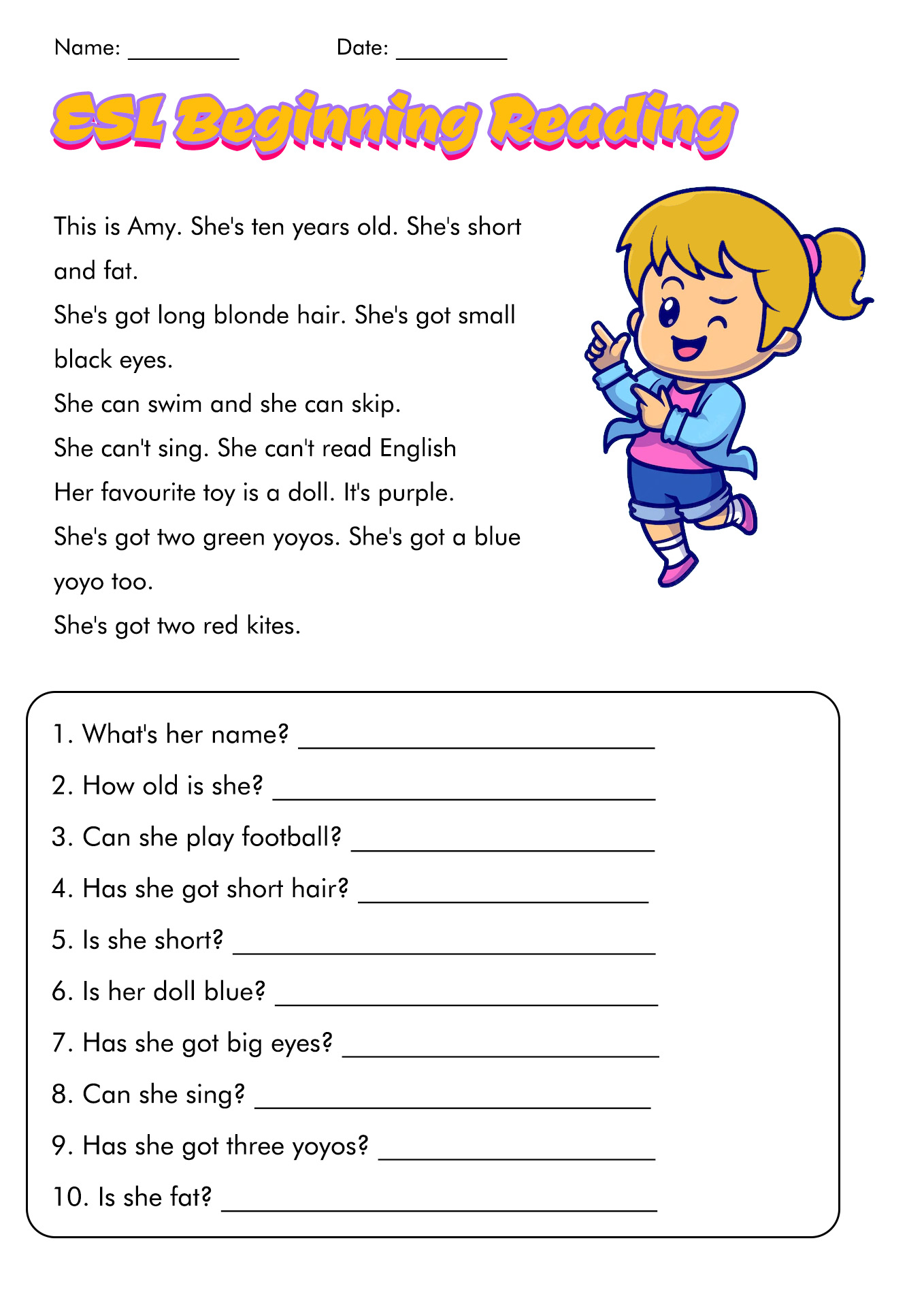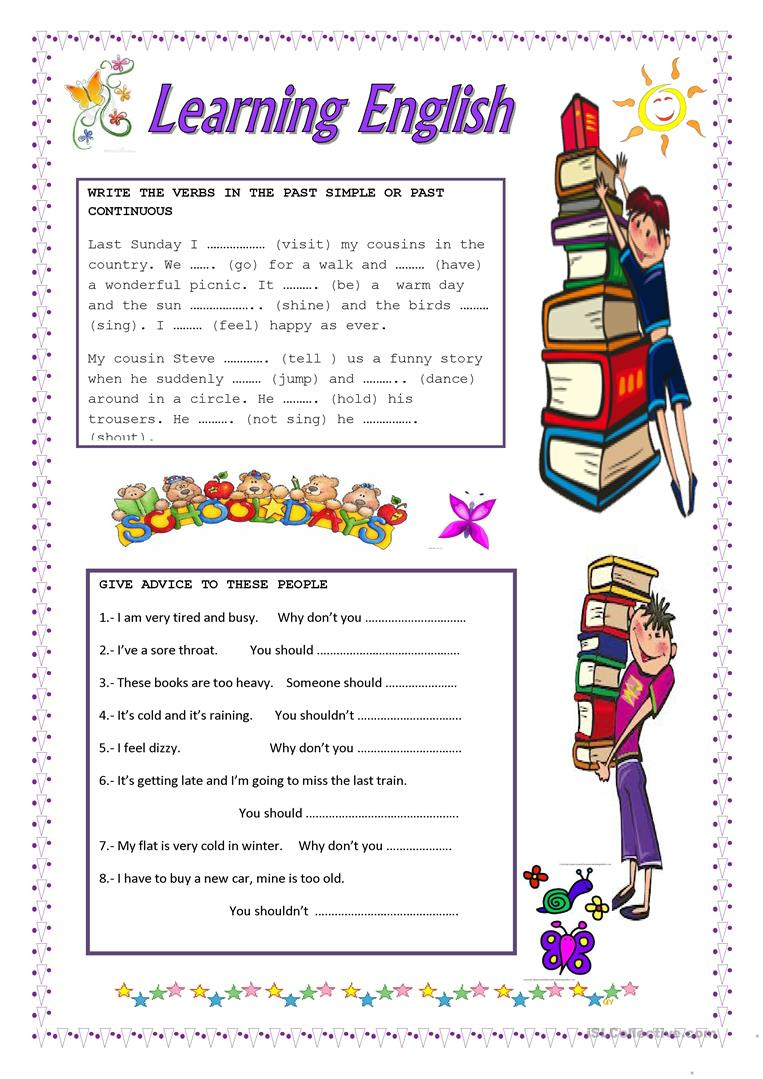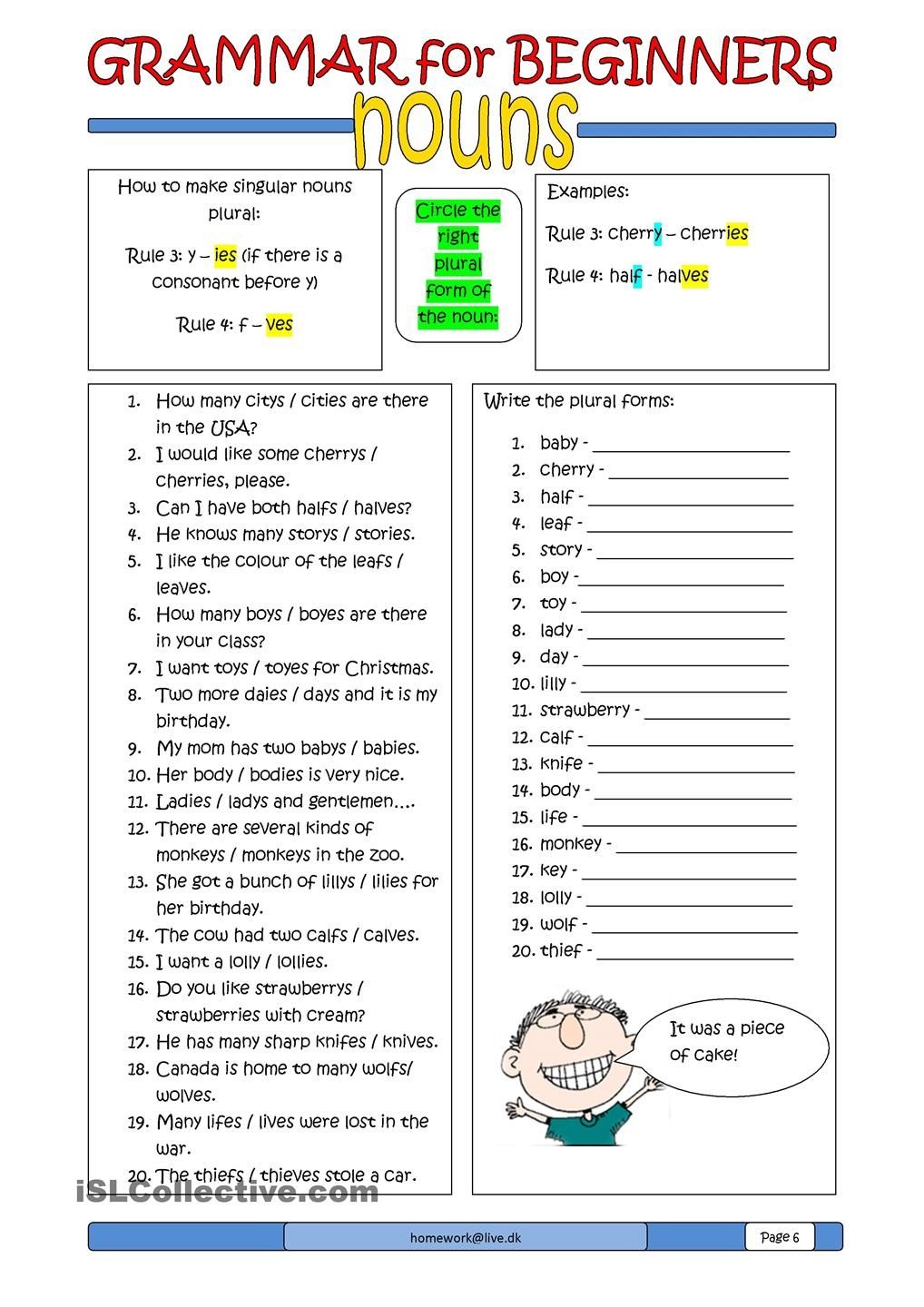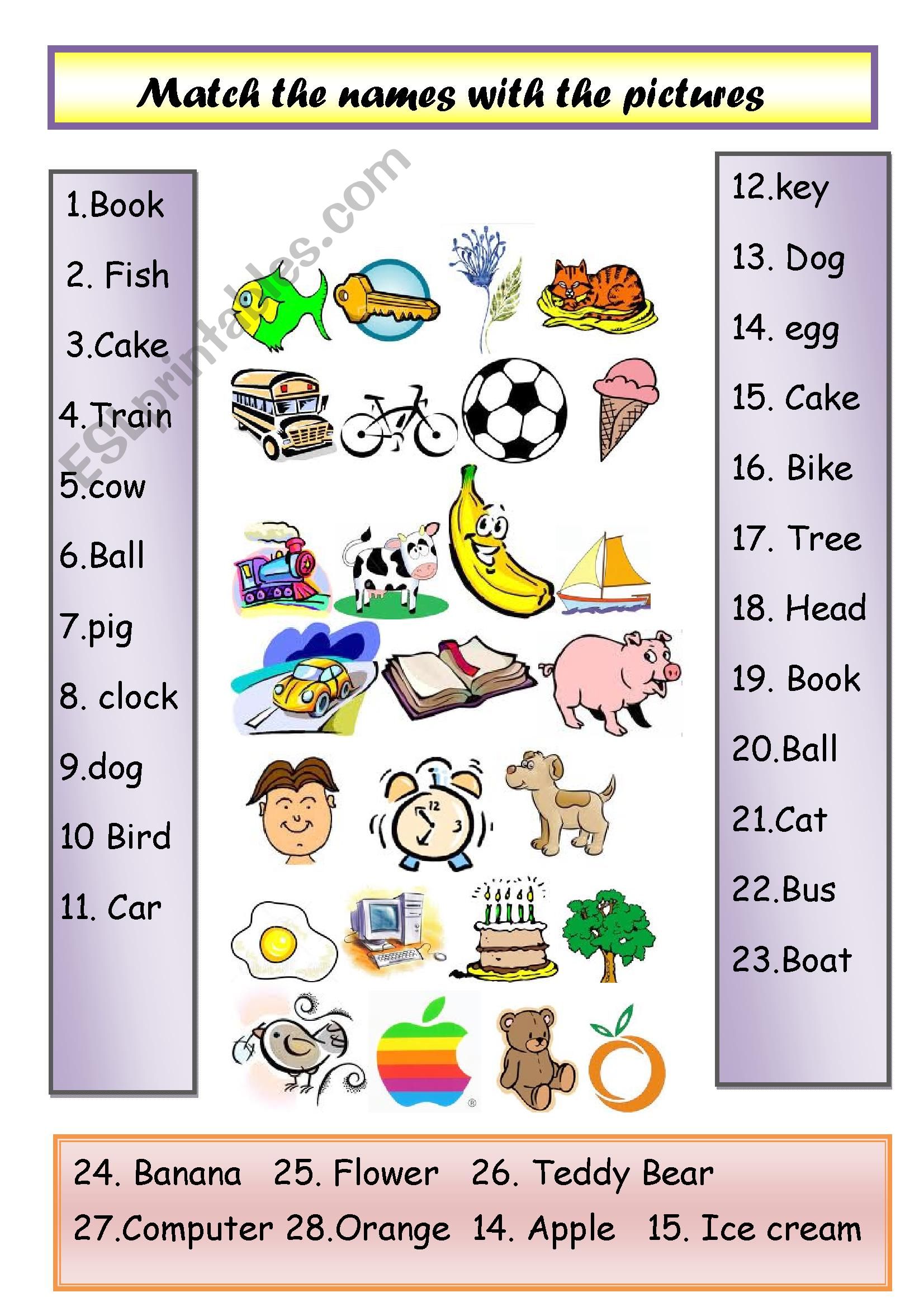
The Indispensable Role of ESL Worksheets in Language Acquisition
In an increasingly interconnected world, the ability to communicate effectively in English has become a paramount skill. As a global lingua franca, English opens doors to countless opportunities in education, career, and cultural exchange. For millions of non-native speakers, the journey to English proficiency is often a challenging yet rewarding endeavor. Central to this journey, especially for those learning English as a Second Language (ESL), are a variety of pedagogical tools, among which ESL worksheets stand out as incredibly versatile and effective resources. Far from being mere paper-based tasks, these structured learning materials play a crucial role in reinforcing grammar, expanding vocabulary, improving comprehension, and fostering independent study.
This article delves into the multifaceted importance of ESL worksheets, exploring their definition, diverse benefits for both learners and educators, various types, effective implementation strategies, and their evolving role in the digital age.

What Exactly Are ESL Worksheets?

At its core, an ESL worksheet is a structured document, typically printable, designed to provide English language learners with focused practice on specific linguistic skills or concepts. Unlike a general textbook, which offers broad coverage, worksheets zero in on particular areas such as verb tenses, prepositions, reading comprehension of a specific text, or writing prompts. They can range from simple fill-in-the-blanks and matching exercises for beginners to complex cloze tests, essay outlines, or debate preparation guides for advanced learners. Their primary purpose is to consolidate learning, identify areas for improvement, and offer repeated exposure to target language structures and vocabulary in a controlled environment.

The Multifaceted Benefits for ESL Learners

For the ESL student, worksheets offer a wealth of advantages that significantly contribute to their language acquisition journey:

- Reinforcement and Consolidation: One of the most significant benefits of ESL worksheets is their ability to reinforce newly learned concepts. A teacher might explain a grammar rule in class, but it’s through repeated practice on a worksheet that the rule truly sinks in. This active recall and application help move information from short-term to long-term memory.
- Targeted Skill Development: Worksheets are excellent for isolating and practicing specific skills.
- Grammar: From subject-verb agreement to complex conditional sentences, grammar worksheets provide structured drills that help learners internalize rules.
- Vocabulary: Matching exercises, crossword puzzles, gap-fills, and sentence completion tasks on worksheets expand a learner’s lexicon and help them understand words in context.
- Reading Comprehension: Worksheets often accompany short texts, asking learners to answer questions, summarize, identify main ideas, or infer meaning, thereby improving their analytical reading skills.
- Writing: Prompts, sentence combining exercises, paragraph structuring activities, and guided essay outlines on worksheets help learners develop their written expression, organization, and coherence.
- Listening (with audio): While not standalone listening tools, many ESL worksheets are designed to complement audio files, requiring learners to fill in missing words, answer questions about a dialogue, or transcribe spoken sentences, thus enhancing their auditory comprehension.
- Speaking (as prompts): Worksheets can provide discussion questions, role-play scenarios, or debate topics, offering learners structured opportunities to practice their oral skills.



- Self-Paced Learning and Independent Practice: ESL worksheets empower learners to work at their own pace. They can revisit difficult sections, spend more time on challenging exercises, and complete tasks without the pressure of immediate classroom interaction. This fosters independence and self-discipline, crucial traits for lifelong language learning.
- Error Identification and Correction: When learners complete a worksheet, they (or their teacher) can quickly identify common mistakes. This immediate feedback loop is invaluable. Understanding why an answer is incorrect is as important as knowing the correct one, leading to deeper learning and preventing the fossilization of errors.
- Assessment and Progress Tracking: For both learners and teachers, worksheets serve as informal assessment tools. They provide a tangible record of a student’s understanding and progress over time, highlighting areas where further instruction or practice is needed.

Advantages for Educators
Teachers, too, reap significant benefits from incorporating ESL worksheets into their pedagogical toolkit:
- Time-Saving and Preparation Efficiency: Creating effective lessons from scratch can be incredibly time-consuming. Ready-made ESL worksheets, whether from textbooks, online repositories, or shared resources, significantly reduce preparation time, allowing teachers to focus more on instruction and individualized student support.
- Differentiation: Worksheets can be easily adapted or selected to cater to students of varying proficiency levels within the same classroom. A teacher can provide simpler versions for struggling students and more challenging ones for advanced learners, ensuring everyone is appropriately challenged.
- Structured Learning and Lesson Planning: Worksheets provide a clear structure for lessons and units. They can be used as warm-up activities, main lesson components, homework assignments, or review materials, offering a coherent flow to the learning process.
- Supplementary Material: They serve as excellent supplementary resources to textbooks or core curricula, offering additional practice on specific points that might not be sufficiently covered elsewhere.
- Homework and Independent Study: Worksheets are ideal for assigning homework, extending learning beyond the classroom, and encouraging students to review and practice independently.
Diverse Types of ESL Worksheets
The variety of ESL worksheets available reflects the diverse needs of language learners. They can generally be categorized by the skill they target:
- Grammar Worksheets: Focus on specific grammatical structures (e.g., verb tenses, articles, prepositions, conditionals, passive voice). Exercises include fill-in-the-blanks, sentence transformation, multiple choice, error correction, and sentence construction.
- Vocabulary Worksheets: Aim to expand lexicon. Examples include matching words to definitions, synonyms/antonyms, word families, collocations, cloze passages, crossword puzzles, word searches, and categorizing words.
- Reading Comprehension Worksheets: Accompany a text (passage, article, story) and feature questions that test understanding of main ideas, specific details, inference, vocabulary in context, and critical thinking.
- Writing Worksheets: Provide scaffolding for written expression. These might include sentence starters, paragraph outlines, graphic organizers for essay planning, prompts for creative writing or opinion pieces, and exercises on punctuation and capitalization.
- Listening Worksheets: Designed to be used with an audio recording. Tasks often involve filling in missing words (dictation), answering comprehension questions, identifying speakers, or ordering events.
- Speaking Worksheets: While speaking is an oral skill, worksheets can facilitate it by providing discussion questions, role-play scenarios, debate topics, picture prompts for description, or interview questions.
- Integrated Skills Worksheets: Combine multiple skills, for example, a reading passage followed by vocabulary, grammar, and writing tasks related to the text.
Effective Implementation Strategies
While ESL worksheets are powerful tools, their effectiveness largely depends on how they are used. Simply handing them out as busy work can be counterproductive. Here are strategies for effective implementation:
- Pre-teach and Contextualize: Before assigning a worksheet, ensure students understand the target grammar, vocabulary, or concept. Provide context and explain the purpose of the activity.
- Vary Activities: Don’t rely solely on one type of worksheet. Mix and match different formats (fill-in-the-blanks, matching, open-ended questions) to keep learners engaged and cater to different learning styles.
- Provide Clear Instructions: Ambiguous instructions can frustrate learners. Demonstrate the first item or do it together as a class.
- Facilitate Feedback and Correction: This is arguably the most crucial step. Don’t just collect and grade. Go over answers as a class, encourage peer correction, or provide individualized feedback. Explain why certain answers are incorrect and offer opportunities for re-doing.
- Encourage Collaboration: Many worksheets can be done in pairs or small groups, fostering communication and peer learning.
- Connect to Real-World Usage: Where possible, relate the worksheet content to real-life situations. For example, a worksheet on polite requests could be followed by a role-play activity.
- Differentiate Appropriately: Be mindful of students’ varying levels. Provide scaffolding for those who need it (e.g., word banks, sentence frames) and extend challenges for advanced learners.
- Don’t Overuse: While valuable, an over-reliance on worksheets can lead to monotony. Balance them with interactive games, discussions, projects, and other dynamic activities.
Where to Find and Create ESL Worksheets
The accessibility of ESL worksheets has exploded with the advent of the internet. Teachers and learners can find a vast array of resources:
- Online Repositories: Websites like ESLprintables.com, BusyTeacher.org, ISLCollective.com, and many others offer thousands of free, user-submitted worksheets.
- Educational Publishers: Many textbook series come with companion workbooks or downloadable worksheets.
- Teacher Blogs and Websites: Individual educators often share their self-created materials.
- AI Tools: Increasingly, AI-powered tools can generate custom worksheets based on specified topics, grammar points, or vocabulary lists, offering unprecedented customization.
- Creating Your Own: For truly specific needs, teachers can design their own ESL worksheets, tailoring them precisely to their students’ levels and learning objectives. This often involves adapting existing materials or developing original content based on classroom observations.
Considerations and the Evolving Role
While ESL worksheets are undoubtedly beneficial, it’s important to acknowledge their limitations. They primarily focus on receptive and productive skills in a controlled, often decontextualized manner. They may not fully replicate the spontaneity and complexity of real-life communication. Moreover, without proper teacher guidance and integration into a broader curriculum, they can become rote exercises that don’t foster deeper understanding or communicative competence.
However, as technology advances, the concept of the "worksheet" is also evolving. Interactive digital worksheets, often embedded in learning platforms, offer instant feedback, multimedia integration (audio, video), and gamified elements, making them even more engaging and effective. The future will likely see a blend of traditional printable ESL worksheets with sophisticated digital counterparts, offering an even richer and more personalized learning experience.
Conclusion
In sum, ESL worksheets remain an cornerstone of English language teaching and learning. Their structured nature provides invaluable practice for grammar, vocabulary, and core language skills, offering a tangible means for learners to consolidate knowledge and track progress. For educators, they are indispensable tools for lesson planning, differentiation, and efficient instruction. While they should be used judiciously and integrated into a holistic language learning approach, the versatility, accessibility, and proven effectiveness of ESL worksheets ensure their continued relevance in empowering millions worldwide to master the English language. They are not just paper; they are pathways to proficiency.
